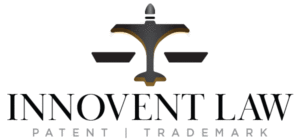Patents, Trademarks, or Copyrights?
A question I usually get is “should I get a patent, trademark, or copyright for my work? Or all of them? Which one would make more sense financially and give me the most bank for my buck?”.
To understand which intellectual property protection would make the most sense for your business, idea, or project, we need to understand what each tool does. I would hate for you to go on Shark Tank and be left without an answer when Mr. Wonderful asks you: “what makes your product so unique and how will you make sure that others won’t just copy your idea?”.
To analyze the differences, and understand whether you should invest in patent, trademark, or copyright protection, let’s look at a simple example that most of us are familiar with: the Sharpie pen or marker.
Protecting how your invention works with a Utility Patent
If you want to protect the way a marker works, you would need to file for a patent. Because the invention is not a plant, you could either apply for a utility patent or design patent. A design patent will protect how your invention looks. If you have a software, you can also protect your GUI (graphic user interface) with a design patent.
The broadest protection you will get in patent for this marker would be a utility patent. That is, a patent on how this marker works. For example, in this case, you can protect the kind of permanent ink you are using, or how the marker actually works. Not sure if you’ve ever opened a marker out of curiosity, but here you would be protecting the cartridge with ink in it, the tip attached to that cartridge, and how when the tip is in contact with a surface, the ink flows from the marker and is dispensed on that surface.
The most important part of a utility patent are the claims: usually found at the end of the patent and which define what is unique about your invention. Without proper drawings, descriptions of the drawings, and a proper definition in your specification, your patent wouldn’t be worth much (assuming the USPTO disregards the deficiencies, which I assure you, they won’t!). The Claims are essentially the metes and bounds of your patent. When someone is copying your patent, the first place you look at is the Claims – because that is what you are trying to protect, or Claim (pun intended).
Protecting how your invention looks and feels with a Design Patent
Now, if you wanted to protect the actual look of the marker, with the edges, back of the marker, round shape, tip, and cap, you could apply for a design patent. These can be deceptively tricky, because while all you need are drawings and a claim, you definitely need the proper drawings and use the right draftsman familiar with USPTO and patent rules to claim the main features you want to claim.
Protecting your mark, or in this case, the word “Sharpie”
If you take a look at a Sharpie, you’ll notice that the word Sharpie has an ® (a circle R next to the name) which means that the name is federally protected. Trademark registration is how you protect your brand name, logo, or slogan. This is to assure that next time you go to an office supply store wanting to buy a Sharpie from the Sharpie company, you are getting what you expected and not some counterfeit product which will not work the same way.
Sometimes your inventions won’t be patentable for a variety of reasons. But one thing you do have control over is your brand. You can chose a name that is free from conflict (that is, no one else is using the same name for the goods and services that you offer) and police your brand to make sure others are not using your goodwill or using your name to sell in the marketplace.
Protecting poems, drawings, or books you’ve written using a Sharpie, or maybe beautiful photos and videos of that Sharpie
If you wrote articles, a book, a poem, or even courses using that Sharpie, you can get a copyright registration for your work. Copyright registrations can be obtained for any work that is written or attached to a fixed medium. So for example, if you took a photo of the Sharpie, an artistic video, or created drawings, you can obtain copyright registration for that work.
In Conclusion
Knowing which intellectual property tools are adequate for your work is a great first step. Sometimes, certain tools are not available for your work. Each work is unique, and it’s always best to work with an intellectual property professional to see which protections are available to you and how to get the best protection for your budget.
Interested in learning more about how to secure your intellectual property?
Schedule a free discovery call with our team today.
Innovent Law helps innovators protect, maintain and defend patent, trademark, copyright, and other intellectual property rights in the United States and around the world.
